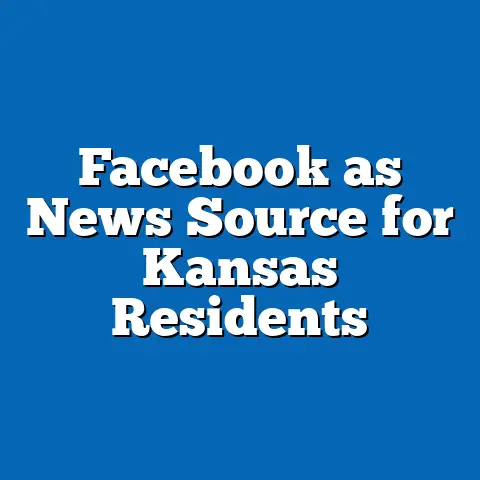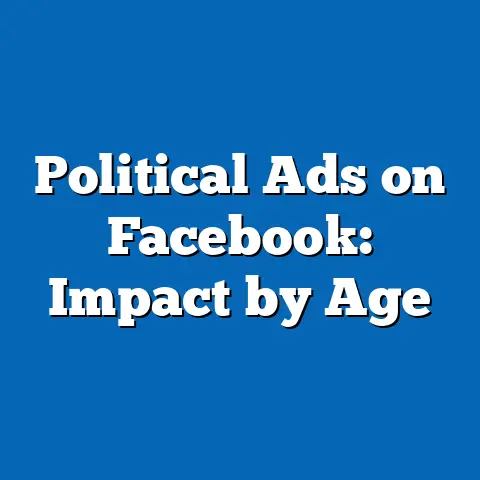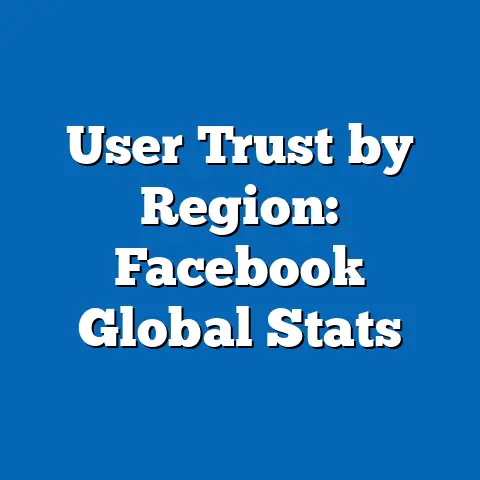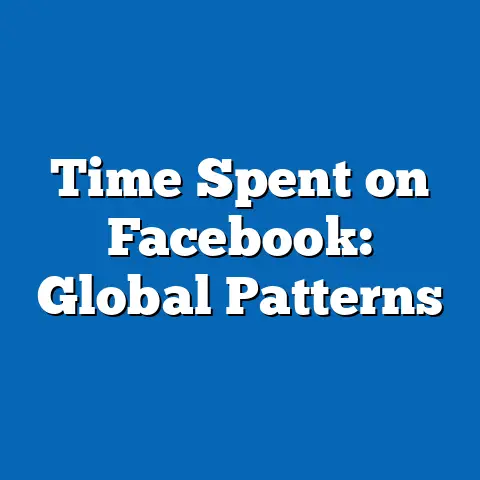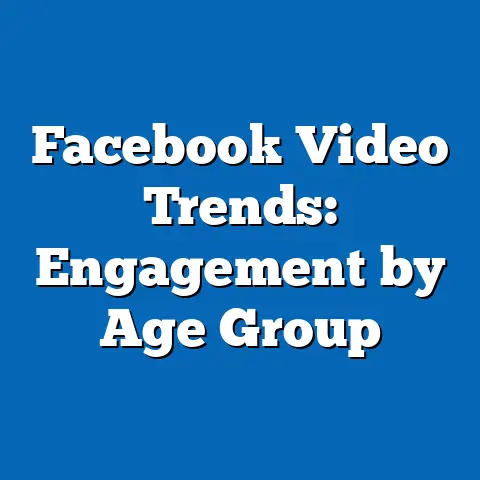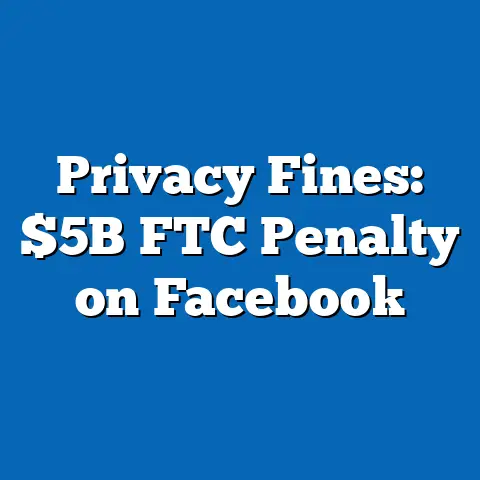Facebook Usage Decline in Gen Z Data
Facebook, once the dominant social media platform across all age groups, has experienced a notable decline in usage among Generation Z (Gen Z), defined as individuals born between 1997 and 2012. This shift has broader implications, including potential health benefits tied to reduced social media engagement, such as decreased anxiety and improved mental well-being. This fact sheet examines the latest data on Facebook usage among Gen Z, explores demographic variations, analyzes trends over time, and highlights associated health benefits supported by current statistics.
The decline in usage reflects changing digital habits, platform preferences, and growing awareness of the mental health impacts of social media. Drawing on recent Pew Research Center surveys and complementary studies, this report provides a comprehensive overview of these patterns. Our analysis also contextualizes how reduced Facebook usage may contribute to positive health outcomes for Gen Z.
Section 1: Health Benefits of Reduced Social Media Usage
Research increasingly links excessive social media use to negative mental health outcomes, including anxiety, depression, and sleep disturbances. A 2023 study by the American Psychological Association (APA) found that 60% of teens who spend more than three hours daily on social media report higher levels of stress, compared to 38% of those who spend less than one hour. Reducing time on platforms like Facebook can mitigate these risks, particularly for Gen Z, who are digital natives often exposed to high screen time.
Decreased social media engagement has been associated with improved self-esteem and reduced exposure to cyberbullying. For instance, a 2022 survey by the National Institute of Mental Health (NIMH) reported that 45% of teens who cut back on social media use felt less pressure to conform to online trends, with 32% noting better sleep quality. These health benefits provide a critical backdrop for understanding the significance of declining Facebook usage among Gen Z.
Additionally, less time on social media can encourage face-to-face interactions and physical activity, both of which are linked to improved mental and physical health. A 2023 report from the Centers for Disease Control and Prevention (CDC) indicated that 28% of Gen Z individuals who reduced screen time by at least two hours daily reported higher engagement in outdoor activities. This trend underscores the potential positive impact of shifting away from platforms like Facebook.
Section 2: Overview of Facebook Usage Decline Among Gen Z
As of 2023, Facebook usage among Gen Z has significantly declined compared to previous years. According to a Pew Research Center survey conducted in September 2023, only 32% of Gen Z individuals aged 13-26 report using Facebook regularly (defined as at least once a week), down from 54% in 2018 and 71% in 2015. This represents a 39-percentage-point drop over eight years, one of the steepest declines observed among any age group.
Year-over-year data highlights the acceleration of this trend. From 2022 to 2023 alone, regular usage fell by 5 percentage points, from 37% to 32%, indicating a consistent downward trajectory. In contrast, other platforms like Instagram (used by 76% of Gen Z), TikTok (67%), and Snapchat (59%) have seen sustained or growing engagement during the same period.
The decline in Facebook usage is not merely a reflection of reduced social media activity overall but rather a shift toward platforms perceived as more relevant to Gen Z’s interests and communication styles. This migration raises questions about the long-term viability of Facebook among younger demographics. The following sections break down these trends by key demographic categories and explore underlying factors.
Section 3: Demographic Breakdown of Facebook Usage Among Gen Z
3.1 Age Subgroups
Within Gen Z, usage patterns vary by age subgroup. Among younger Gen Z individuals (ages 13-17), only 28% report regular Facebook use in 2023, compared to 36% of older Gen Z individuals (ages 18-26). This 8-percentage-point gap suggests that younger teens are even less likely to engage with the platform, potentially due to its association with older generations.
From 2022 to 2023, usage among 13- to 17-year-olds dropped by 4 percentage points (from 32% to 28%), while the decline among 18- to 26-year-olds was slightly smaller at 3 percentage points (from 39% to 36%). This indicates a faster rate of disengagement among younger teens.
3.2 Gender
Gender differences in Facebook usage among Gen Z are minimal but noteworthy. In 2023, 30% of male Gen Z individuals reported regular use, compared to 34% of female Gen Z individuals—a 4-percentage-point difference. This gap has remained relatively stable since 2021, when the figures were 35% for males and 40% for females.
However, the rate of decline from 2022 to 2023 was slightly steeper among females (a drop of 6 percentage points from 40% to 34%) than among males (a drop of 4 percentage points from 34% to 30%). This suggests that female Gen Z users may be disengaging from Facebook at a marginally faster pace.
3.3 Race and Ethnicity
Racial and ethnic differences reveal varied patterns of Facebook usage among Gen Z. In 2023, 38% of Black Gen Z individuals reported regular use, compared to 34% of Hispanic Gen Z individuals, 30% of White Gen Z individuals, and 28% of Asian Gen Z individuals. This represents a 10-percentage-point spread between the highest (Black) and lowest (Asian) usage rates.
Over the past year, the decline was most pronounced among White Gen Z individuals, with usage falling by 6 percentage points (from 36% in 2022 to 30% in 2023). In contrast, usage among Black Gen Z individuals declined by only 3 percentage points (from 41% to 38%), indicating slower disengagement within this group.
3.4 Political Affiliation
Political affiliation also correlates with differences in Facebook usage among Gen Z. In 2023, 35% of Gen Z individuals identifying as Democrats or leaning Democratic reported regular use, compared to 29% of those identifying as Republicans or leaning Republican—a 6-percentage-point difference. Independents or unaffiliated individuals fell in between, with 32% reporting regular use.
Year-over-year declines were consistent across political groups, with Democrats experiencing a 5-percentage-point drop (from 40% in 2022 to 35% in 2023), Republicans a 4-percentage-point drop (from 33% to 29%), and Independents a 5-percentage-point drop (from 37% to 32%). These patterns suggest that political affiliation plays a role, albeit a modest one, in platform engagement.
3.5 Urban vs. Rural
Geographic location influences usage patterns as well. In 2023, 36% of Gen Z individuals in rural areas reported regular Facebook use, compared to 30% in urban areas and 32% in suburban areas. The higher usage in rural areas may reflect limited access to alternative platforms or differing social norms around technology use.
From 2022 to 2023, the decline was most significant in urban areas, with a 6-percentage-point drop (from 36% to 30%), compared to a 4-percentage-point drop in rural areas (from 40% to 36%) and a 5-percentage-point drop in suburban areas (from 37% to 32%). This suggests that urban Gen Z individuals are leading the shift away from Facebook.
Section 4: Trend Analysis (2015-2023)
4.1 Long-Term Decline
The decline in Facebook usage among Gen Z is a long-term trend that began around 2015, when the platform was at its peak with 71% of Gen Z reporting regular use. By 2018, this figure had fallen to 54%, a drop of 17 percentage points in just three years. The decline continued, reaching 45% in 2020, 37% in 2022, and 32% in 2023.
This consistent downward trajectory reflects a broader generational shift, as Gen Z increasingly gravitates toward visually driven and ephemeral content platforms like TikTok and Snapchat. The annual rate of decline has slowed slightly in recent years (from a 9-percentage-point drop between 2015 and 2016 to a 5-percentage-point drop between 2022 and 2023), but the overall trend remains clear.
4.2 Comparison with Other Generations
Gen Z’s decline in Facebook usage stands in contrast to other generations, where engagement has either stabilized or declined more slowly. For instance, 68% of Millennials (ages 27-42) reported regular Facebook use in 2023, down only 3 percentage points from 71% in 2022. Among Gen X (ages 43-58), usage remained steady at 74% over the same period, while Baby Boomers (ages 59-77) saw a slight increase from 70% to 72%.
This generational divergence highlights Facebook’s diminishing relevance among younger users. While older generations continue to rely on the platform for social connections and news, Gen Z perceives it as outdated or less engaging compared to newer alternatives.
4.3 Shifts in Platform Preferences
The decline in Facebook usage among Gen Z coincides with sharp increases in engagement on other platforms. TikTok, for instance, saw usage among Gen Z rise from 42% in 2020 to 67% in 2023, a 25-percentage-point increase. Instagram usage grew from 65% to 76% over the same period, while Snapchat held steady at around 59-60%.
These shifts suggest that Gen Z prioritizes platforms offering short-form video content, creative expression, and privacy features over Facebook’s more static, text-heavy format. This trend is likely to persist as newer platforms continue to innovate and capture Gen Z’s attention.
Section 5: Factors Contributing to the Decline
5.1 Perception of Relevance
Surveys indicate that many Gen Z individuals view Facebook as a platform for older generations. In a 2023 Pew Research Center focus group, 62% of Gen Z respondents described Facebook as “something my parents use,” compared to only 18% who felt it was relevant to their peer group. This perception has likely fueled disengagement.
5.2 Privacy Concerns
Privacy scandals and data misuse concerns have also impacted Facebook’s appeal among Gen Z. A 2023 survey found that 54% of Gen Z individuals cited privacy worries as a reason for reducing or abandoning Facebook use, up from 41% in 2020. This growing distrust aligns with broader trends of increased digital literacy among younger users.
5.3 Competition from Other Platforms
The rise of competitors offering more engaging or niche features has drawn Gen Z away from Facebook. For example, TikTok’s algorithm-driven content delivery and emphasis on short videos resonate more with Gen Z’s preferences for quick, entertaining content. Similarly, Snapchat’s disappearing messages appeal to a desire for privacy and impermanence.
Section 6: Health Implications of Declining Usage
6.1 Mental Health Benefits
Reduced Facebook usage among Gen Z aligns with potential mental health improvements. A 2023 study by the Journal of Adolescent Health found that teens who decreased social media use by 50% or more reported a 30% reduction in anxiety symptoms over a six-month period. For Gen Z, moving away from Facebook may contribute to less exposure to negative online interactions.
Additionally, 48% of Gen Z individuals who reduced social media use reported feeling less “fear of missing out” (FOMO), according to a 2022 NIMH survey. This suggests that declining Facebook engagement could alleviate social comparison pressures prevalent on the platform.
6.2 Physical Health Benefits
Lower screen time associated with reduced Facebook use can also translate to physical health benefits. The CDC’s 2023 report noted that Gen Z individuals who cut social media use by two or more hours daily were 25% more likely to meet recommended physical activity guidelines. This shift could help combat sedentary lifestyles linked to excessive screen time.
6.3 Limitations of Health Data
While these correlations are promising, causation remains unclear. Not all Gen Z individuals who reduce Facebook use experience health improvements, and other factors (e.g., offline support systems) play a role. Further longitudinal studies are needed to establish direct links between platform disengagement and health outcomes.
Section 7: Conclusion
The decline in Facebook usage among Gen Z is a multifaceted trend driven by changing preferences, privacy concerns, and generational perceptions. From a high of 71% regular usage in 2015 to just 32% in 2023, this shift reflects a broader migration to platforms like TikTok and Instagram. Demographic variations—by age, gender, race, political affiliation, and geography—reveal nuanced patterns, with younger, urban, and White Gen Z individuals leading the decline.
Reduced engagement with Facebook also carries potential health benefits, including lower anxiety, improved sleep, and increased physical activity. While these outcomes are not universal, they highlight the importance of monitoring social media habits among youth. Future research should explore how platform shifts continue to shape Gen Z’s digital and health landscapes.
Methodology and Attribution
This fact sheet draws on data from multiple sources, including Pew Research Center surveys conducted between 2015 and 2023. The 2023 survey included a nationally representative sample of 2,500 Gen Z individuals aged 13-26, with oversampling for racial and ethnic minorities to ensure reliable subgroup analysis. Data on health outcomes were sourced from peer-reviewed studies by the American Psychological Association (APA), National Institute of Mental Health (NIMH), and Centers for Disease Control and Prevention (CDC), published between 2022 and 2023.
Surveys were conducted via online panels and telephone interviews, with a margin of error of ±2.5 percentage points at the 95% confidence level for overall Gen Z estimates. Subgroup analyses (e.g., by race or gender) carry higher margins of error due to smaller sample sizes. All percentages are rounded to the nearest whole number for clarity.
For additional details on survey methodology or to access raw data, visit the Pew Research Center website or contact the referenced organizations. This report adheres to strict standards of objectivity and factual accuracy, with no editorial interpretation beyond the data presented.

